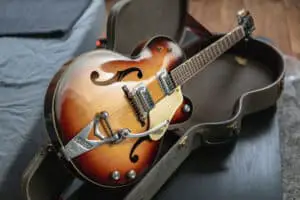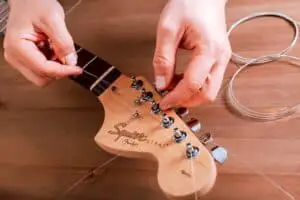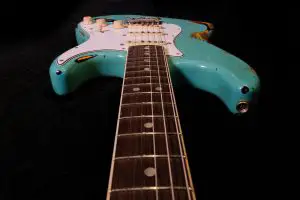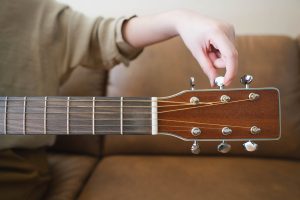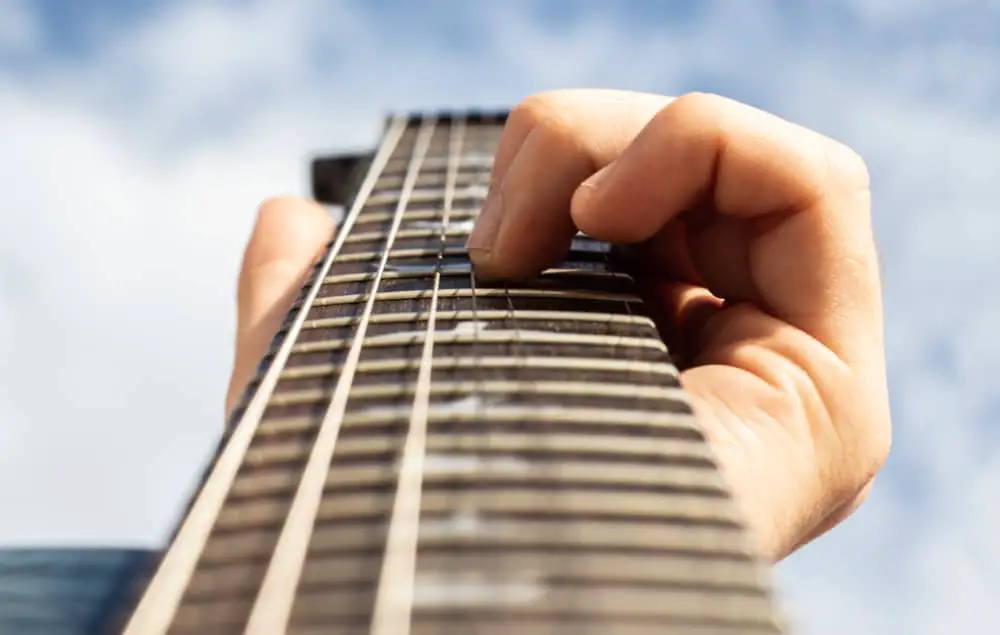
A fretboard is the part of a stringed musical instrument on which the strings are mounted. It is usually a thin, flat piece of wood or metal and is often elevated from the instrument’s body by means of wooden or metal frets.
The word “fret” comes from Old French “freter,” meaning “to mend a net” or “to fasten with a cord.” The original purpose of the fretboard was to provide a hard surface against which the player could press the strings, thus stopping them at different pitches.
This article will explore what makes a fretboard unique, its different components, and what playing techniques can be used. If you’re interested in learning more about the fretboard, keep reading!
The Different Parts of a Fretboard
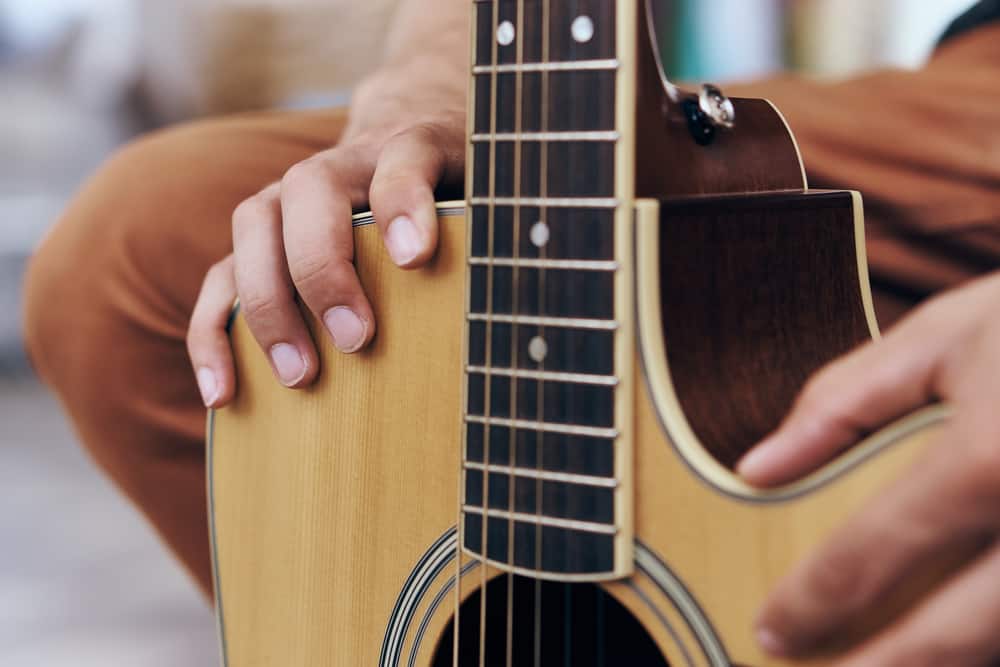
The fretboard is divided into several parts, each with its unique function. These parts include the following:
- Nut
- Frets
- Inlays
- Neck
- Body
Nut
The nut is the first part of the fretboard that the string touches. It is a small, shaped piece of plastic, metal, bone, or wood inserted into the headstock. The nut holds the strings in place and determines the spacing between them.
The nut also provides a surface for the strings to rest against when not being played. This prevents the string from buzzing or rattling against the frets.
Frets
Frets are thin metal strips that are inserted into the fretboard. They provide a raised surface for the player to press the string against. This makes it possible to play different notes by pressing the string down at different points along the fretboard.
The frets are usually spaced evenly apart, but some instruments have what is known as a “compound” or “progressive” fretboard, which means that the frets are closer together at the higher end of the fretboard.
Inlays
Inlays are decorative markings that are added to a guitar’s fretboard. They can be simple dots or more elaborate designs, and they may be made from different materials such as pearl, abalone, wood, or metal.
Inlays serve both a functional and aesthetic purpose. They can help the player identify certain positions on the fretboard and add a touch of style to the instrument.
Neck
The neck is the guitar part that extends from the body to the headstock. It holds the strings in place and what is pressed against by the player’s fingers when playing.
The neck is typically made from wood, although some more modern guitars may be made from carbon fiber or other materials. This part of the guitar must be strong enough to withstand constant tension and pressure and be flexible enough to allow the player to easily press down on the strings.
Body
The body of a guitar is what gives it its shape and structure. It is typically made from wood, although some modern guitars may be constructed from other materials such as carbon fiber or metal.
The body plays a crucial role in determining how a guitar sounds and functions. In general, heavier bodies will produce a fuller, richer sound, while lighter bodies will be more responsive and have better sustain.
The Different Types of Fretboards
There are several different types of fretboards, each with its unique features and benefits. The most common type of fretboard is the standard or “regular” fretboard. This type of fretboard is often made of rosewood or maple and has standard frets.
Another common type of fretboard is the Fret-King Green Label composite fretboard, a synthetic material that produces a brighter and more responsive sound than regular woods.
Other types of fretboards include ebony, scalloped, multi-scale, and jumbo. These fretboards are less common, but they each offer their unique advantages.
Ebony Fretboard
Ebony fretboards are made from dense hardwood, often used on acoustic guitars. This type of fretboard provides a clear, focused sound with good sustain.
Scalloped Fretboard
A scalloped fretboard has been carefully carved out so that the frets are raised slightly. This provides extra space between the string and the fret, giving the player more control over their sound.
Multi-Scale Fretboard
A multi-scale or “fanned-fret” fretboard has different scale lengths for each string. This helps to even out the tension on the guitar and reduce buzzing while playing.
Jumbo Fretboard
A jumbo fretboard is a larger version of the standard fretboard, providing added comfort to players with larger hands or longer fingers.
How to Choose the Right Fretboard
The type of fretboard you choose will ultimately come down to personal preference. If you’re not sure which type is right for you, it’s best to try out a few different types before deciding.
There are many different factors to consider when choosing a guitar fretboard. The fretboard’s material, size, and shape all play a role in how the guitar will sound and feel. Ultimately, it is up to the player to decide what type of fretboard best suits their needs.
The Benefits of Fretboards
- Provides a clear, focused sound with good sustain
- It comes in a variety of shapes and sizes to suit different players’ needs
- It gives the player more control over their sound
- It offers extra space between the string and the fret, which can reduce buzzing.
- It can provide added comfort to players with larger hands or longer fingers.
Conclusion
The fretboard is an essential part of any guitar, providing structure, support, and control to the instrument. Whether you choose a standard or specialized fretboard, there are many factors to consider to find one that best suits your needs and playing style.
Ultimately, what matters most is finding a fretboard that feels comfortable and helps you create the sounds and effects you want.


